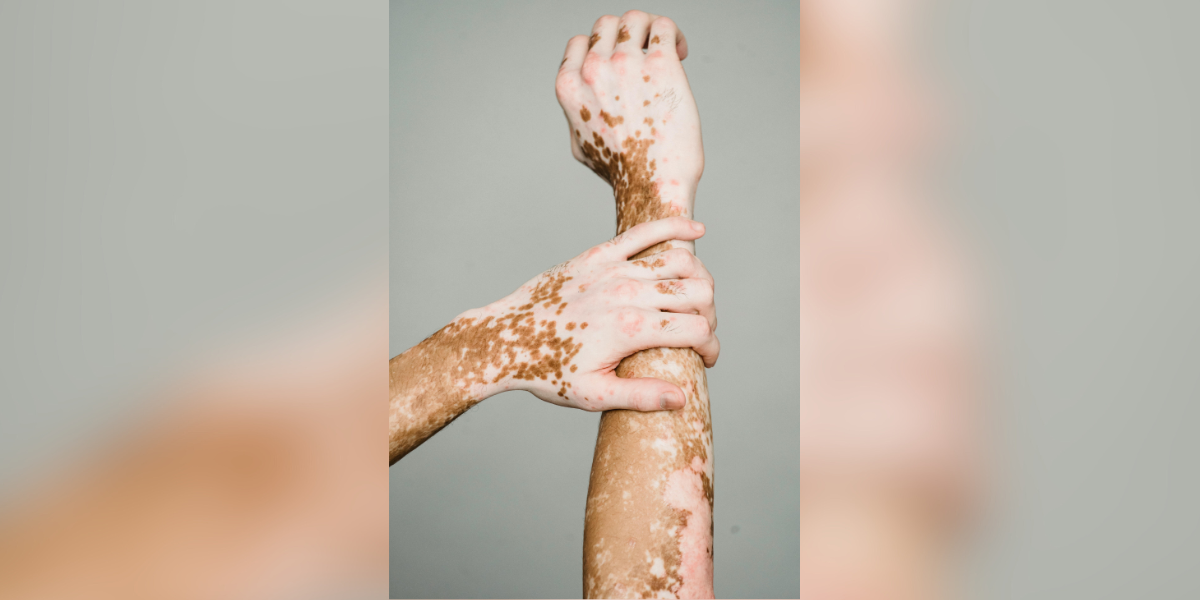In India, vitiligo’s visible white patches often lead to stigma, shame, and isolation—especially in a society where skin tone influences beauty, marriage prospects, and even job opportunities
Published Jun 25, 2025 | 7:00 AM ⚊ Updated Jun 25, 2025 | 7:00 AM

World Vitiligo Day: Yet another gut health win (Pexels- Armin Rimoldi)
Synopsis: A breakthrough study from Northwestern University suggests a microbial compound from beneficial gut bacteria may dramatically slow or even reverse vitiligo. In mouse models, injections of the compound halted the spread of white patches and restored pigmentation. Published in the Journal of Investigative Dermatology, the findings offer new hope for treating this emotionally painful skin condition, especially among darker-skinned individuals.
Scientists may have found a surprising new way to tackle vitiligo — using a compound from good gut bacteria. Vitiligo is a skin condition that causes white patches and deep emotional scars, especially in darker-skinned individuals.
A new pre-clinical study from Northwestern University, published in the Journal of Investigative Dermatology, has found that injecting this microbial compound into mice prone to vitiligo slowed the disease dramatically — and even helped reverse it.
“This was beyond anything we expected,” said Dr. I. Caroline Le Poole, a senior researcher on the study, professor of Dermatology and of Microbiology-Immunology.. “The white patches stopped spreading — and colour started coming back.”
Vitiligo, a condition marked by the loss of skin pigmentation, affects between 0.5 percent and 2 percent of the global population and is often accompanied by other health complications such as cardiovascular disease, endocrine disorders, and psychological distress.
The patches of discoloration typically show up on visible areas like the face, scalp, hands, and around body openings such as the mouth and genitals. In many cases, those diagnosed with vitiligo also live with at least one other autoimmune disorder.
Dr. I. Caroline Le Poole, who has spent over three decades researching vitiligo, noted that the disease tends to be more severe in individuals with darker skin tones — not because the disease is biologically worse, but because the contrast in pigmentation makes it more visible.
This often intensifies the social stigma and emotional toll. “Patients often feel powerless as they watch their disease progress, unsure how they will look next month,” Le Poole said. “For many, stabilising the disease would be life-changing.”
Although vitiligo can significantly impact self-esteem, especially in adolescents dealing with peer pressure, not everyone seeks treatment. “We’ve seen beautiful models with vitiligo challenging societal norms, and that’s wonderful,” Le Poole added. “But for those who want treatment, it’s important to provide real options that can halt disease progression,”
In this study, scientists explored whether a natural compound made by friendly gut bacteria (called Bacillus subtilis) could help slow or stop vitiligo. For 18 weeks, the researchers gave weekly doses of the microbial compound to mice genetically inclined to develop vitiligo. By the end of the experiment, pigment loss had reduced by a stunning 74 percent.
How? The compound acted like a peacekeeper — reducing the aggressive T-cells that attack pigment cells in the skin, while increasing protective immune cells that are usually missing in people with vitiligo. “This could be a standalone treatment, or it might supercharge existing therapies,” said Dr. Le Poole in the study
In India, where skin tone often unfairly defines beauty, vitiligo carries not just medical implications, but also social stigma. Visible white patches on the face, hands, or body can lead to shame, isolation, and in some cases, difficulty with marriage proposals or job opportunities.
The study author noted that vitiligo “has been found to be more severe in people with darker skin tones. The visibility of the discoloration … amplifies stigma and emotional distress.”
For those affected — especially adolescents — the unpredictability of the condition can be heartbreaking. “Patients often say they feel powerless, not knowing what they’ll look like next month,” said Dr Girish MS, dermatologist from Bengaluru.
In 2022, the US FDA approved the first re-pigmentation cream for vitiligo but it is said to have helped only about 30 percent of patients regain noticeable colour, mostly on the face. This new gut-derived compound, however, offers a promising shift in how vitiligo could be managed — from treating symptoms to possibly stopping the disease in its tracks.
For now, the compound is being injected into mice — but researchers are already looking at more practical human options.
“Weekly injections are possible, but imagine if we could deliver this through a food additive or a skin ointment,” said Dr. Le Poole in the study. “That would change everything,”
The team is now collaborating with scientists across institutions to refine the treatment and test it for use in humans. They’re also curious whether the same compound could help in other autoimmune conditions involving skin.
Le Poole added that the same microbial compound she and her colleagues injected in mice could potentially treat other autoimmune conditions, particularly those involving killer T-cells in the skin. “Our next step is collaborating with scientists from several institutions to refine the compound, understand its mechanisms and determine whether it works alongside existing treatments for auto-immune disease.”
(Edited by Ananya Rao)
